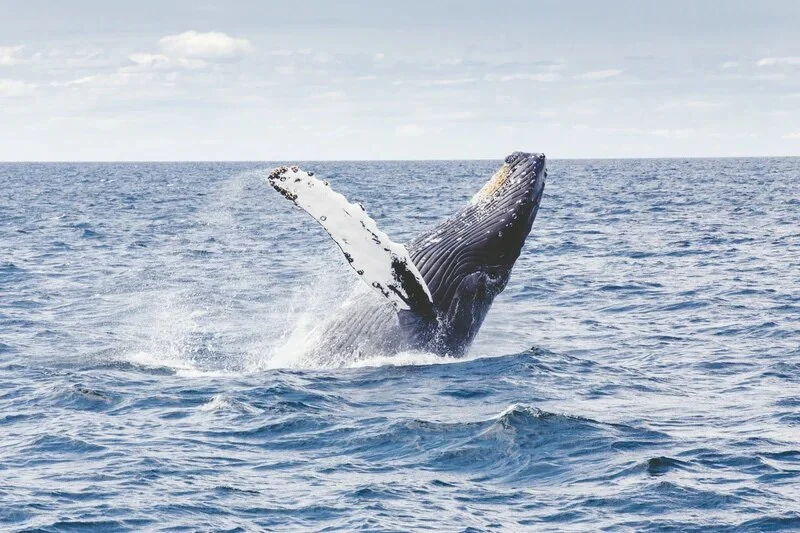Multi-Disciplinary Thinking: How Geology Shaped Darwin’s Tree of Life
In 1859, Charles Darwin published On the Origins of Species, putting forth The Theory of Evolution Through Natural Selection.
Evolutionary theory set forth a Tree of Life model for living species, unifying all living organisms by one shared biological tree. It turned out that what looked like completely separate species like cats and dogs were arguably close cousins, branching off from a shared ancestor.
Though Darwin solved one of biology’s greatest mysteries, it was modern 19th century geology that provided the necessary groundwork for discovering the Tree of Life.
Outline
A New Theory for the Origin of Species
For Darwin it seemed that nature, with her ever evolving conditions, constantly selected the most “favorable” variations, from existing plants or animals, to advance to the next round. This would go on again and again, millions of generations over. If nature found some slight variation favorable, the trait could be passed down, accumulating in a species. Over immense periods of time, this gave rise to a new species.
But for this audacious theory to be true, Earth’s history would need to be stood on its head. Earth’s history needed a rewrite. And much of the story lay imbued within her rocks, waiting to be understood.
Old World Hurdles: Just How Old Was the Earth?
By the turn of the 19th century, the enormous scope of nature’s handiwork remained a mystery as she wouldn’t reveal her secrets to just anyone.
Some earlier accounts of biological theory speculated the “sudden emergence” of new species and “sudden disappearance”, perhaps caused by catastrophic floods or sudden rises in mountain ranges. At first glance, the fossil record seemed to support this theory, a problem Darwin encounters:
“One class of facts, however, namely, the sudden appearance of new and distinct forms of life in our geological formations supports at first sight the belief in abrupt development. “
-Charles Darwin, On the Origin of Species
And just how old was the earth?
The paradigm for many 19th century thinkers was that the world seemed likely a few thousand years old. The oldest date in history was from an Egyptian Calendar, dated 4241 BC—the earliest definite date in humanity.
How much history, if much, pre-dated the pyramids? An Earth that was only a few thousand years old meant biology was as well. So it was mere coincidence that monkeys and orangutans were eerily similar.
And were species unalterable, essentially designed solely for their current roles? Each living species appeared to be tailored for their current niche. Bees were made for pollinating, lions for hunting.
Could land-dwelling mammals really wind up someday calling the vast seas and open skies home?
Whoever was to piece together nature’s secrets would need a deep understanding of many subjects. They’d need to understand anatomy, biology, the fossil record, geology, and the Earth’s age. It so happened, Charles Darwin possessed these vast interests and came along at the right time.
Darwin: A Multi-Disciplinary Thinker
Charles Darwin, originally set out to become a doctor at the University of Edinburgh. While at Edinburgh, he spent free-time dabbling in taxidermy and anatomy.
After two years of medical school, Darwin’s father realized his son’s lack of interest with becoming a doctor. He sent Darwin to Christ College, Cambridge, to earn a Bachelor’s in Arts, with hopes he’d become a man of the pulpit. While studying at Christ’s College, he collected beetles, took geology courses from Charles Sedgwick (a founder of modern geology), and mapped regional geologic formations.
It was while at Christ’s College he made friends with professor and botanist John Stevens Henslow, who’d later recommend Darwin for the position of Naturalist on the HMS Beagle. The historic five-year journey came with the opportunity to study biology and geology from around the globe.
On the voyage, Darwin collected plant, animal, and marine life, to both study himself and bring back home to England, where it would receive further analysis.
From the Galápagos Islands, he brought back various types of Finches, imbued with varying adaptations, notably different beaks, that seemed well-suited for their specific home island. While visiting Chile, he observed the the after-effects of an earthquake, appearing to raise the land. Climbing the Andes, he came upon seashells bedded in mountain tops.
While traveling the globe, the ship’s Captain gave Darwin a book written by Sir Charle’s Lyell, Principles of Geology. The book not only pointed to active geologic motion, it came with a revelatory idea then: the Earth was ungodly old.
Darwin came to share many of Lyell’s interpretations on geology, as they lined up with his own observations from across the globe. Darwin would go on to use geology, including Lyell’s geologic insights, to advance new ideas for living organisms:
“I am well aware that this doctrine of natural selection, exemplified in the above imaginary instances, is open to the same objections which were first argued against Sir Charles Lyell’s noble views on the ’modern changes of the Earth, as illustrated geology:’… And as modern geology has almost banished such views as the excavation of a great valley by a single diluvial wave, so all natural selection banish the belief of the continued creation of new organic beings, or of any great and sudden modification in their structure.”
-Charles Darwin, On The Origin of Species
Geologic and Evolutionary Insights
Darwin took three novel 19th century ideas from geology; he integrated them with life sciences to unify biology and form the basis of The Theory of Evolution:
The Enormity of Time
Continuous Geologic Motion Shapes Species
Imperfection of the Geologic and Fossil Record
The Suprising Enormity of Time
Lyell’s book, Principles of Geology argued the planet was really old, lending credence to the term “Geologic Time”. He argued for gradualism, believing that the Earth underwent a constant accumulation of creeping geologic processes, requiring immense periods of time to play out—shaping mountains and valleys across millions of years.
Sensing the truth in Lyell’s interpretation, Darwin conceives a similar conceptual framework for how nature could have also shaped species, just like mountains and valleys, utilizing seemingly endless time and iterations:
“But the chief cause of our natural unwillingness to admit that one species has given birth to another distinct species, is that we are always slow in admitting great changes of which we do not see the steps. The difficulty is the same as that felt by so many geologist, when Lyell first insisted that long lines inland cliffs had been formed, and great valleys excavated, by the agencies which we still see at work. The mind cannot possibly grasp the full meaning of the term of even a million years; it cannot add up and perceive the full effects of many slight variations, accumulated during an almost infinite number of generations.“
-Charles Darwin, On The Origin of Species
Continuous Geologic Motion Shapes Species
And so, Darwin and Lyell’s work reframed the vastness of time. Suddenly, the story of the Earth didn’t seem to be about mankind at all. Humanity now looked like a footnote within a much larger story of life—according to them.
In addition to the earth being really old, the earth’s land masses underwent constant changes—a puzzle piece, previously unknown to Darwin’s predecessors. Lyell’s geologic insights lifted the continents from a largely passive role in the state of affairs, to an active one—albeit at a sloth-like pace.
It turned out that the continents, constantly zigging and zagging, rising and falling, had influenced modern-day species. Now it was possible the African and South-American continent, today oceans apart, could have one day been one, their plants and animals once sharing continent.
Darwin took note, and again, drew on a contemporary geologic framework to think through how life might have evolved:
“During the periods of subsidence [sinking land masses], there would probably be much extinction of life; during the periods of elevation, there will be much variation...“ Charles Darwin, On The Origin of Species
The Imperfection of the Geologic and Fossil Record
In a perfect world, every species that came before would be neatly captured through fossils, contained in well organized rock layers. The layers, themselves a collection of plant and animal life from various eras, would sit one on top of the other. The oldest records on bottom, and newest on top. It’d be like a well-curated museum, recording and organizing a vast history in perfect sequential detail.
For example, let’s say the ground squirrel has a place at the Earth’s “museum” next to the gliding squirrel, maybe someday to find itself displayed next to the flying squirrel. In a well-curated museum, placing all three species next to each other, the progression would be easy to tell.
All to often though, a species like the gliding squirrel might be missing, perhaps leaving a ground squirrel in the fossil record, just next to a bird-like squirrel. There’d be a missing link. Nature was an unreliable curator. These “missing links” raised objections to a Tree of Life model:
‘But, as by this theory innumerable transitional forms must have existed, why do we not find them embedded in countless numbers in the crust of the Earth?”
“He who rejects this view of the imperfection of the geological record, will rightly reject the whole theory. Charles Darwin, On The Origin of Species
Fortunately, geology provided sound explanations. Constant geologic motion meant the fossil record wasn’t reliable. “The missing link” in an evolutionary chain, perhaps like our gliding squirrel, either eroded eons ago or nature simply didn’t provide the initial conditions for depositing fossils. Hence, “missing links” could have existed but not be present in the fossil record.
Once again, Darwin’s intertwines geologic insights, alongside biology, to enhance Evolutionary Theory:
“If, then, the geological record be as imperfect as many believe, and it may at least be asserted that the record cannot be proved to be much more perfect, the main objections to the theory of natural selection are greatly diminished or disappear.” -
Charles Darwin, On The Origin of Species
Conclusion
“Besides, I could already see that real-world problems didn’t neatly lie within territorial boundaries. They jumped right across.” '
- Charlie Munger, Vice Chairman Berkshire Hathaway
Darwin’s quest unified biology through the help of geology. His multi-disciplinary approach shows how a broad thinking can help with real world problems—which tend to spread their roots across diverse subject matters. Had Darwin remained ignorant of contemporary geology, we may never have known him, who happens to be resting at Westminster Abby—next to Sir Isaac Newton.
But how might this be useful for me?…I’ve never observed any professionals work or personal life made worse by studying the art of communication (maybe try Chris Voss).
Finally, Kahneman and Tversky’s Nobel-Prize winning work in psychology us turning up in every realm where human judgment is used. We’ve witnessed their psychological insights incorporated into economics, insurance, medicine, baseball (best illuminated in Moneyball), Football, and Basketball to name a few (Kahneman and Tversky may be best explained in The Undoing Project, by Michael Lewis).
And if these points haven’t landed, perhaps an Abraham Maslow quote will help:
“To a man with a hammer every problem looks like a nail.”
-Abraham Maslow
Author’s Note
Alfred Wallace came up with a similar evolution theory around the same time and published his results, together with Darwin.
It was only revealed in the 1900s how old the earth truly was at around 4.5 billion years old.
Another part of Darwin’s success was his prolific note-taking, constructing over 10 notebooks on a wide variety of subjects.


